- The paper introduces a natural selection-inspired pruning framework that retains high-fitness 3D Gaussian primitives to enhance rendering quality.
- It leverages a fully learnable process with a finite-prior opacity decay technique to reduce the Gaussian budget by 85% while boosting PSNR by over 0.6 dB.
- The method eliminates manual parameter tuning, streamlining convergence and improving efficiency in real-time rendering applications.
Gradient-Driven Natural Selection for Compact 3D Gaussian Splatting
Introduction
The paper "Gradient-Driven Natural Selection for Compact 3D Gaussian Splatting" addresses the challenges of high computational and storage costs incurred by the conventional 3D Gaussian Splatting (3DGS) approach. By introducing an innovative pruning framework inspired by natural selection, this method advances the rendering quality and efficiency of 3DGS without manual intervention or additional parameters. It leverages a fully learnable process to prune redundant Gaussian primitives, significantly reducing the computational overhead while concurrently enhancing image quality.
Background and Motivation
3DGS uses a collection of 3D Gaussian primitives to represent a scene, where each primitive is defined by parameters such as position, covariance, opacity, and color. This explicit representation offers advantages in real-time performance but requires millions of Gaussians to achieve high-quality rendering, presenting a substantial burden in storage and computation. Existing techniques for compacting these representations typically involve manual pruning criteria or additional masking parameters, which may be suboptimal.
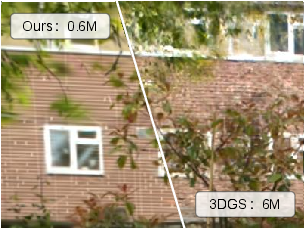
Figure 1: A qualitative comparison between our method and 3DGS on the garden scene.
Natural Selection Inspired Framework
The proposed natural selection inspired pruning mechanism applies a globally consistent regularization gradient field on Gaussian opacities. This field induces a uniform environmental pressure analogous to natural selection pressures, while rendering-specific gradients reflect the 'fitness' of each Gaussian. Consequently, Gaussians contributing positively to rendering quality are retained longer, while others decay and are pruned when their opacity falls below a defined survival threshold.
Methodology
Pruning Technique
The framework decomposes the pruning task into two sub-goals: selecting a superior subset of Gaussians to maximize potential quality and ensuring stable convergence within limited training iterations. To meet the first objective, the natural selection process autonomously selects Gaussians with strong rendering contributions. For the second goal, a minimal-prior opacity decay technique is introduced to facilitate rapid convergence.
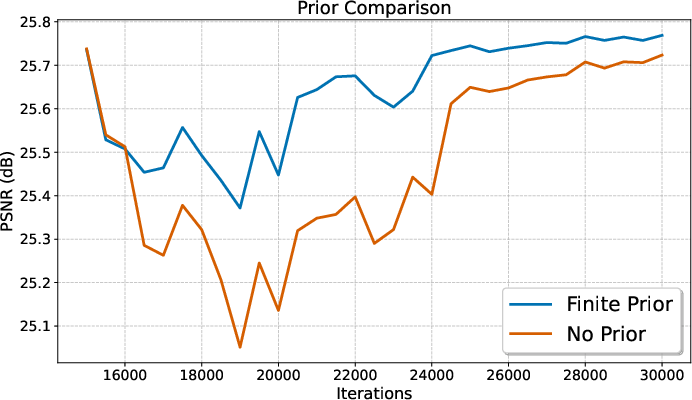
Figure 2: The figure illustrating the optimization speed improvement of finite prior over no prior.
Finite Prior Implementation
Opacity values are adjusted using a sigmoid function to balance decay and selection effectively. This finite prior approach ensures that decays are linearly proportional to the fitness-derived opacity, thereby accelerating convergence without compromising the fairness of the selection process.
Experimental Results
The method demonstrates a significant improvement over previous standard pruning approaches. Utilizing only 15% of the usual Gaussian budget, it delivers a more than 0.6 dB gain in PSNR compared to traditional methods under constrained Gaussian budgets, as shown in comprehensive quantitative and qualitative evaluations.
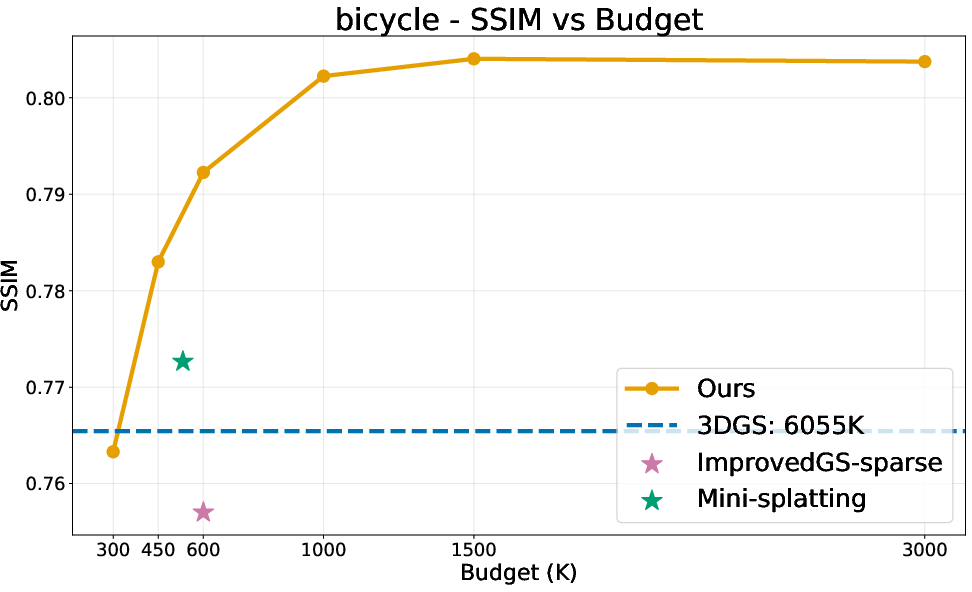
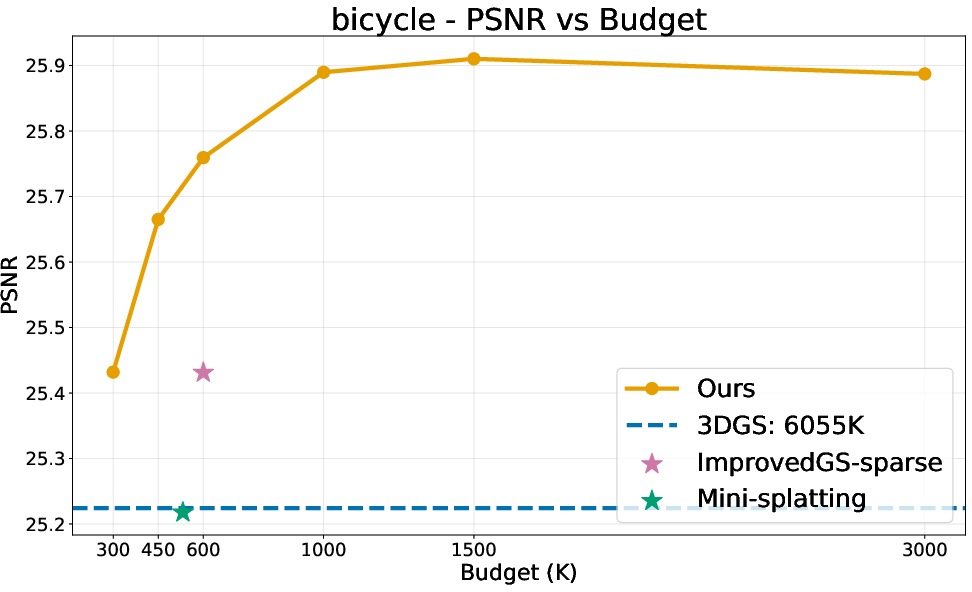
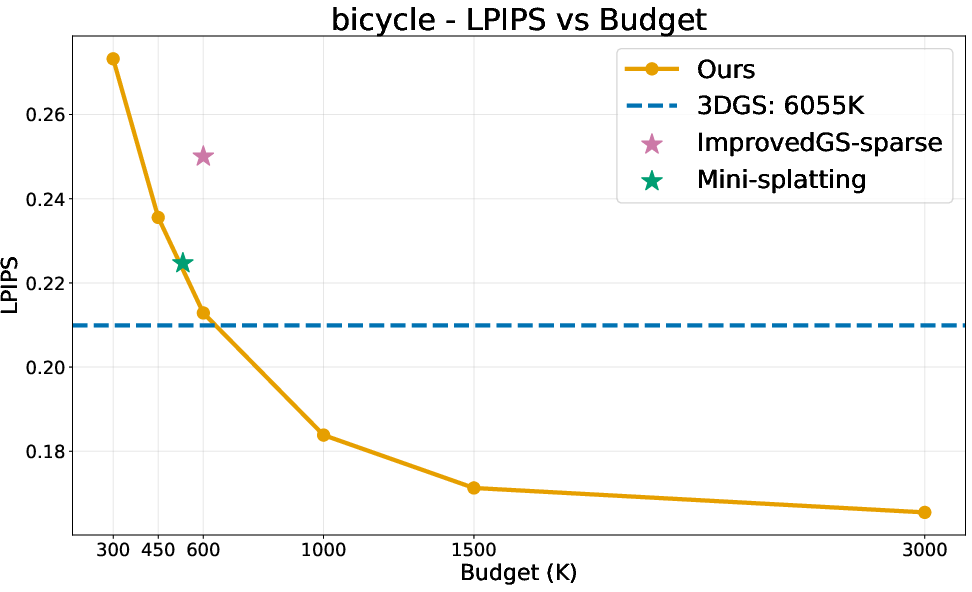
Figure 3: Performance under varying Gaussian budgets, showcasing the robustness of the proposed framework across different scenes.
Conclusions
The gradient-driven natural selection framework revolutionizes the compact 3DGS approach by entirely eliminating manual pruning criteria and additional parameters. Rendering quality improves concurrently with computational and storage efficiency, marking a significant stride forward in real-time rendering applications. Future work will explore the integration of natural selection frameworks with dynamic or sparse-view reconstruction settings. This work serves as a foundational approach for broader adoption in computationally constrained environments.




